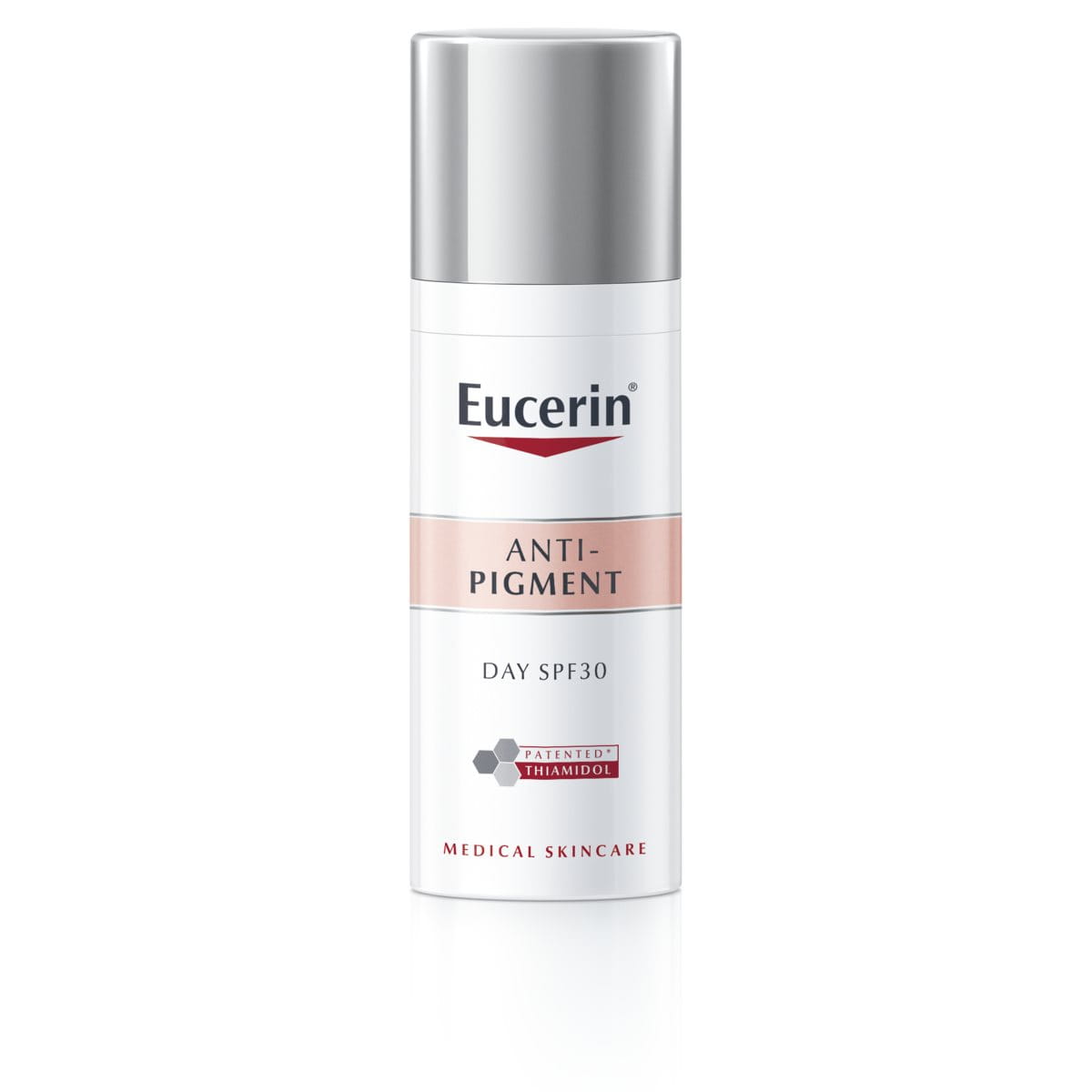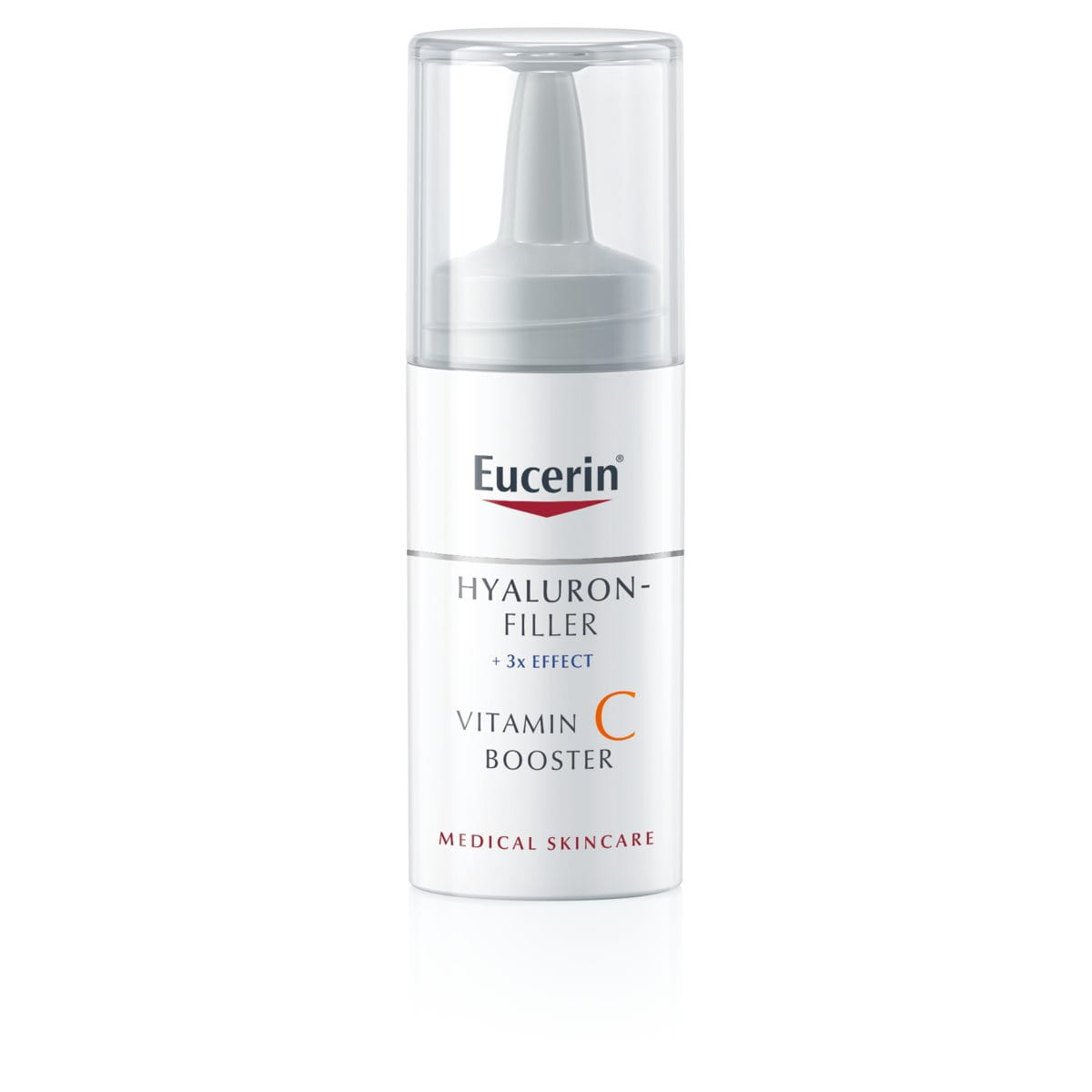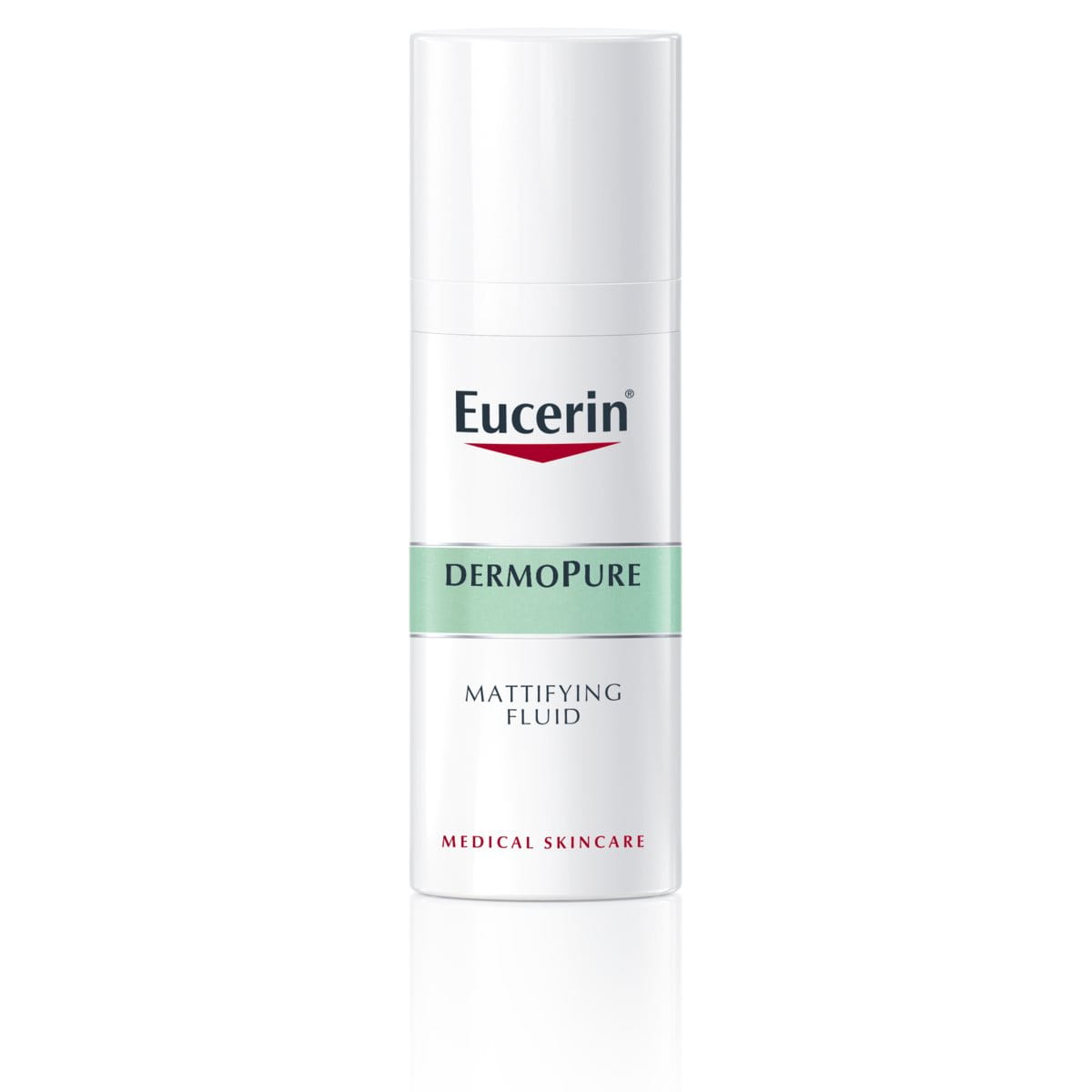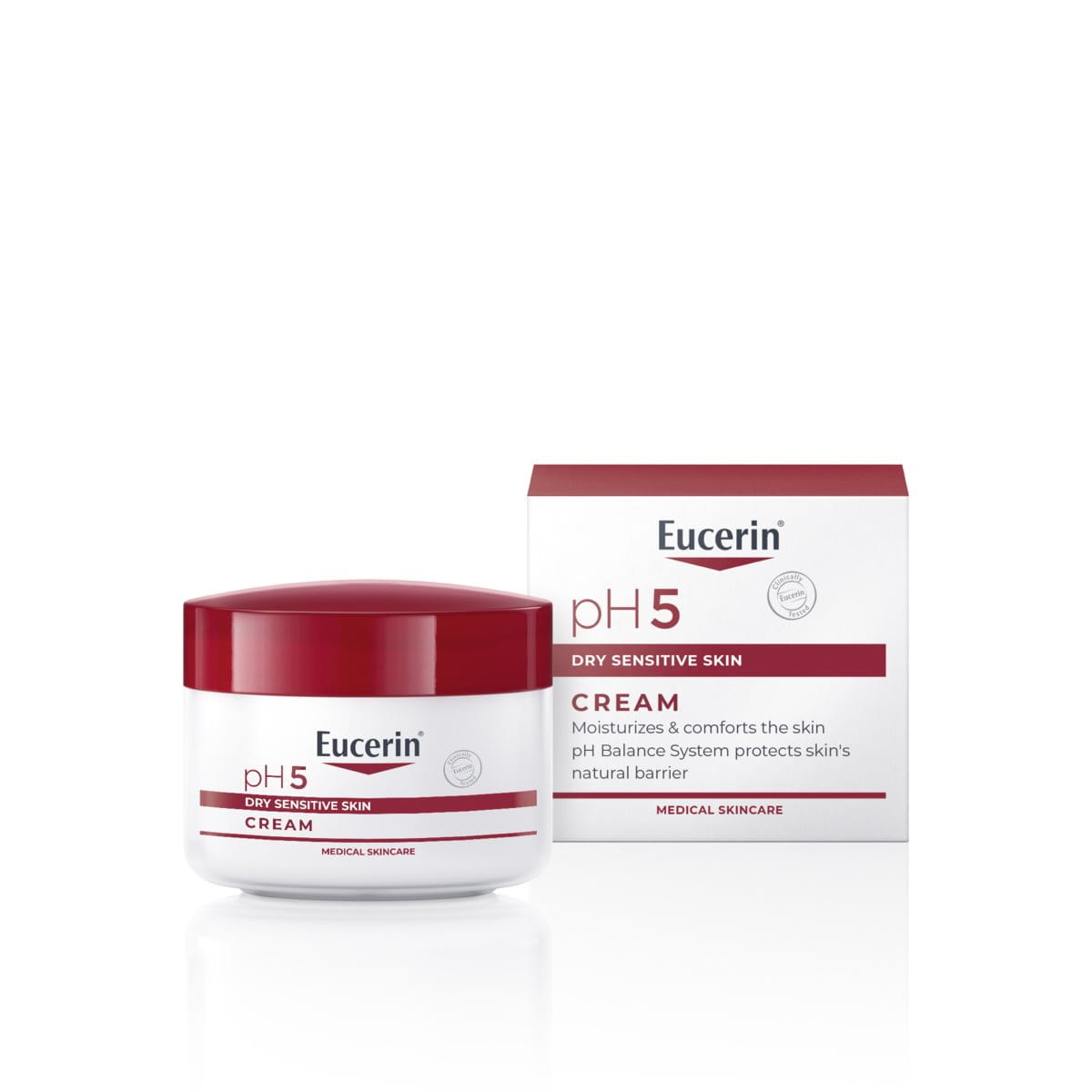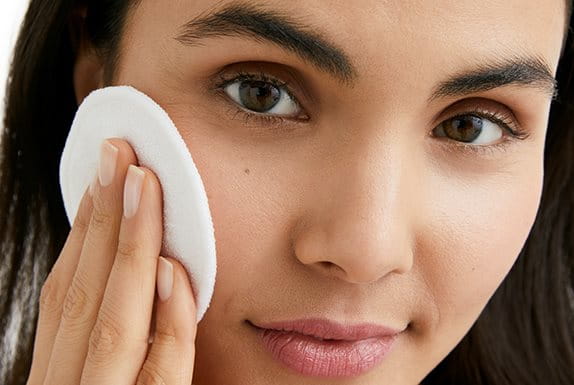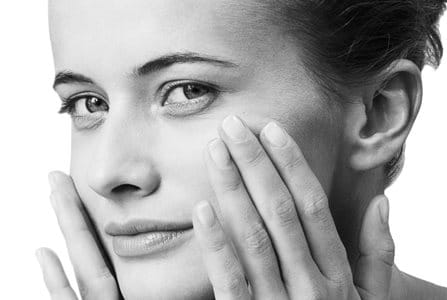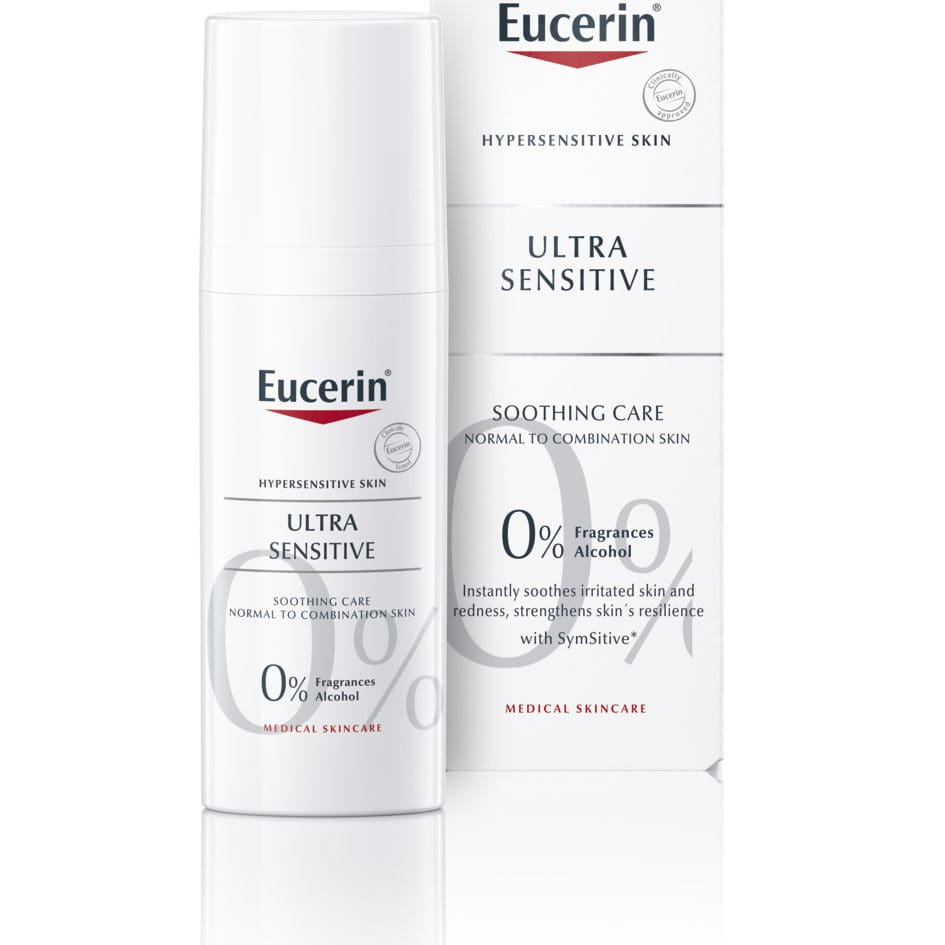There are four basic types of healthy skin: normal, dry, oily and combination skin. Skin type is determined by genetics. The condition of our skin can, however, vary greatly according to the various internal and external factors it is subjected to.
Understanding the four skin types: normal, dry, oily and combination
Attention Box
If you need help with identifying your skin type the skin test may be a useful tool. If you need further advice on how best to care for it, Eucerin recommend that you contact a dermatologist or pharmacist.

Normal skin
‘Normal’ is a term widely used to refer to well-balanced skin. The scientific term for healthy skin is eudermic.
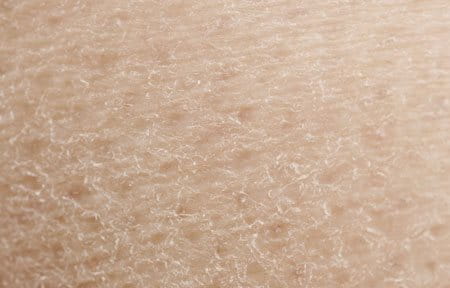
Dry skin
‘Dry’ is used to describe a skin type that produces less sebum than normal skin. As a result of the lack of sebum, dry skin lacks the lipids that it needs to retain moisture and build a protective shield against external influences.
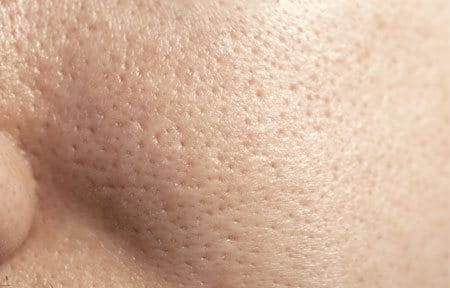
Oily skin
‘Oily’ is used to describe a skin type with heightened sebum production. This over production is known as seborrhea.
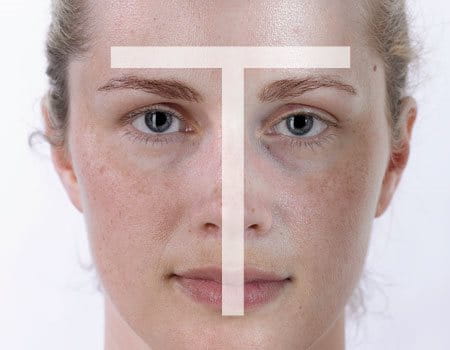
Combination skin
Combination skin is, as the name suggests, skin that consists of a mix of skin types.
Normal skin
What is normal skin?
‘Normal’ is a term widely used to refer to well-balanced skin. The scientific term for well-balanced skin is eudermic. The T-zone (forehead, chin and nose) may be a bit oily, but overall sebum and moisture is balanced and the skin is neither too oily nor too dry.
How to identify normal skin
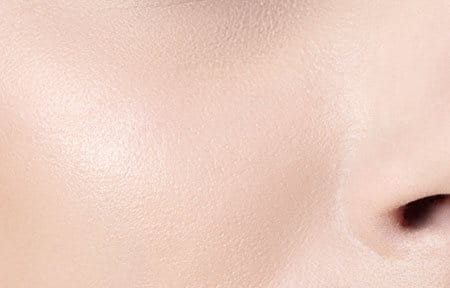
Normal skin has:
- fine pores
- good blood circulation
- a velvety, soft and smooth texture
- a fresh, rosy colour uniform transparency
- no blemishes
and is not prone to sensitivity.
As a person with normal skin ages, their skin can become dryer. Read more in age induced dryness.
Dry skin
What is dry skin?
‘Dry’ is used to describe a skin type that produces less sebum than normal skin. As a result of the lack of sebum, dry skin lacks the lipids that it needs to retain moisture and build a protective shield against external influences. This leads to an impaired barrier function. Dry skin (Xerosis) exists in varying degrees of severity and in different forms that are not always clearly distinguishable.
Significantly more women suffer from dry skin than men and all skin gets dryer as it ages. Problems related to dry skin are a common complaint and account for 40% of visits to dermatologists.
The causes of dry skin
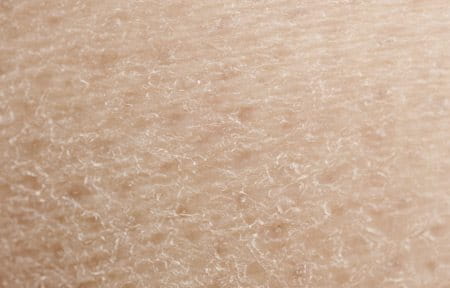

Skin moisture depends on supply of water in the deeper skin layers and on perspiration.
Skin is constantly loosing water via:
- Perspiration: active water loss from the glands caused by heat, stress and activity.
- Trans-epidermal water loss (TEWL): the natural, passive way in which skin diffuses about half a litre of water a day from the deeper skin layers.
Dry skin is caused by a lack of:
- Natural moisturising factors (NMFs) - especially urea, amino acids and lactic acid – that help to bind in water.
- Epidermal lipids such as ceramides, fatty acids and cholesterol which are needed for a healthy skin barrier function.
As a result, the skin’s barrier function can become compromised.
Find out more in dry skin.
How to identify different degrees of dry skin
Dry skin ranges from skin that is a little bit drier than normal, through very dry skin to extremely dry skin. The differences can normally be distinguished by:

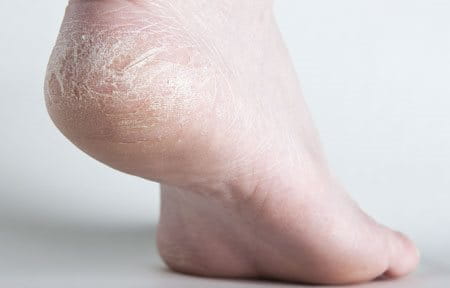
Dry skin
Mildly dry skin can feel tight, brittle and rough and look dull. Skin elasticity is also low.
Very dry skin
If the dryness is not treated, skin may develop:
- mild scaling or flakiness in patches
- a rough and blotchy appearance (sometimes it appears to be prematurely aged)
- a feeling of tightness
- possible itchiness
It is also more sensitive to irritation, redness and the risk of infection. Find out more in dry skin.
Extremely dry skin
Certain areas of the body – particularly hands, feet, elbows and knees – are prone to:
- roughness
- chapping with a tendency to form rhagades (cracks)
- calluses
- scaling
- frequent itchiness
Extremely dry skin is most commonly found on the elderly or on severely dehydrated hands. Read more in rough and cracked body skin.
Oily skin
What is oily skin?
‘Oily’ is used to describe a skin type with heightened sebum production. An over production is known as seborrhea.
The causes of oily skin
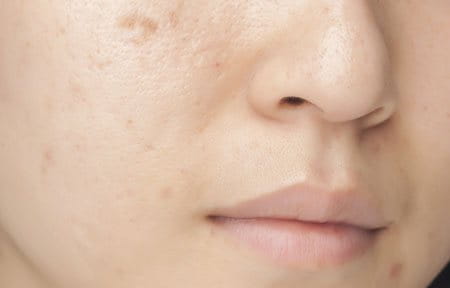
A number of issues trigger the over production of sebum:
- genetics
- hormonal changes and imbalances
- medication
- stress
- comedogenic cosmetics (make-up products that cause irritation)
How to identify the different types of oily skin?
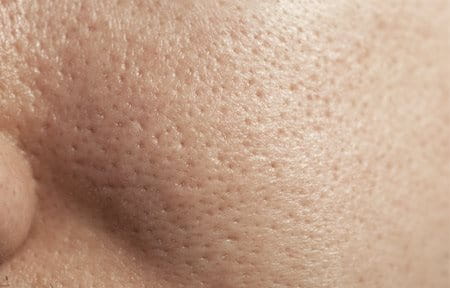

Oily skin is characterised by:
- enlarged, clearly visible pores
- a glossy shine
- thicker, pale skin: blood vessels may not be visible
Oily skin is prone to comedones (blackheads and whiteheads) and to the varying forms of acne.
With mild acne, a significant number of comedones appear on the face and frequently on the neck, shoulders, back and chest too.
In moderate and severe cases, papules (small bumps with no visible white or black head) and pustules (medium sized bumps with a noticeable white or yellow dot at the centre) appear and the skin becomes red and inflamed.
Read more in acne.
Combination skin
What is combination skin?
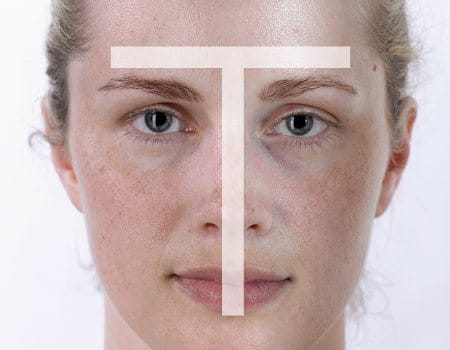
In combination skin the skin types vary in the T-zone and the cheeks. The so-called T-zone can differ substantially – from a very slim zone to an extended area.
Combination skin is characterised by:
- an oily T-zone (forehead, chin and nose)
- enlarged pores in this area perhaps with some impurities
- normal to dry cheeks
The causes of combination skin
The oilier parts of combination skin are caused by an over production of sebum. The drier parts of combination skin are caused by a lack of sebum and a corresponding lipid deficiency.
Evaluating skin type and condition
Unlike skin type, skin condition can vary greatly during the course of your life. The many internal and external factors that determine its condition include: climate and pollution, medication, stress, hereditary factors that influence the levels of sebum, sweat and natural moisturising factors that your skin produces as well as the products that you use and the skincare choices that you make.
Skincare products should be selected to match skin type and address skin condition. Dermatologists and other skincare experts determine a person’s skin type condition by measuring the following factors:
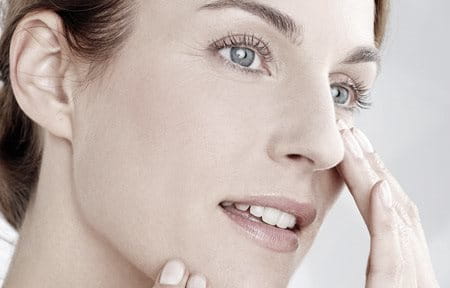

Signs of ageing
Our skin type can evolve during our lifetime. Those with an oily skin type in their teenage years can find their skin becoming drier post-puberty and those with a normal skin type can find their skin getting drier as they age.
As all skin types age, skin loses volume and density, fine lines and wrinkles appear and changes in pigmentation can occur. Understanding and measuring these signs of ageing helps us to determine the condition of our skin. Read more in skin ageing.
Skin colour
Skin colour and ethnicity influences how our skin reacts to external forces such as the sun, pigmentation disorders, irritation and inflammation. Basic skin colour is determined by the density of the epidermis and the distribution of melanin. Read more in skin ethnics.
The redness of skin is also a useful measure of skin condition; it indicates how successful our circulation is and can be helpful in identifying conditions such as couperose and rosacea.
Skin Sensitivity
Sensitive skin is skin that is easily irritated by different factors, that are generally tolerated by well-balanced skin, such as skin care products or high and low temperatures. For some people, sensitive skin is a permanent condition, for others, sensitivity is triggered by certain internal and external factors. It occurs when skin’s natural barrier function is compromised, causing water loss and allowing penetration of irritants. Symptoms are exacerbated by factors that facial skin is most exposed to, from the sun to some ingredients in cosmetics and cleansers
Read more in sensitive facial skin.
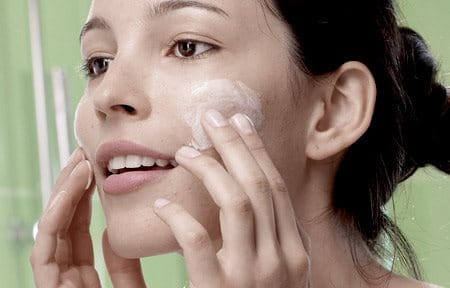
Sebum and sweat production
The amount of sebum produced by the sebaceous glands in skin controls the efficacy of the skin’s barrier function and, as a result, the condition of skin. The overproduction of sebum can lead to oily, acne-prone skin, while low sebum production causes dry skin.
The perspiratory glands in skin produce sweat to help the body to maintain its optimum temperature. Excessive or low sweat production can influence skin condition.
Natural Moisturising Factors (NMF’s)
Naturally produced in healthy skin, NMF’s such as amino acids help to bind water into the skin, maintain its elasticity and suppleness and prevent it from becoming dehydrated. When the skin’s protective barrier is damaged it is often unable to retain these essential NMF’s so skin moisture decreases and condition is affected.
Skin sensitivity
Sensitive skin is skin that is easily irritated and is more reactive than normal skin. Identifying and evaluating symptoms such as redness, a rash, stinging, itching and burning help in determining skin condition.
Our brand values

We deliver a holistic dermo-cosmetic approach to protect your skin, keep it healthy and radiant.

We work together with leading dermatologist and pharmacist partners around the world to create innovative and effective skincare products they can trust and recommend.

For over 100 years, we have dedicated ourselves to researching and innovating in the field of skin science. We believe in creating active ingredients and soothing formulas with high tolerability that work to help you live your life better each day.

